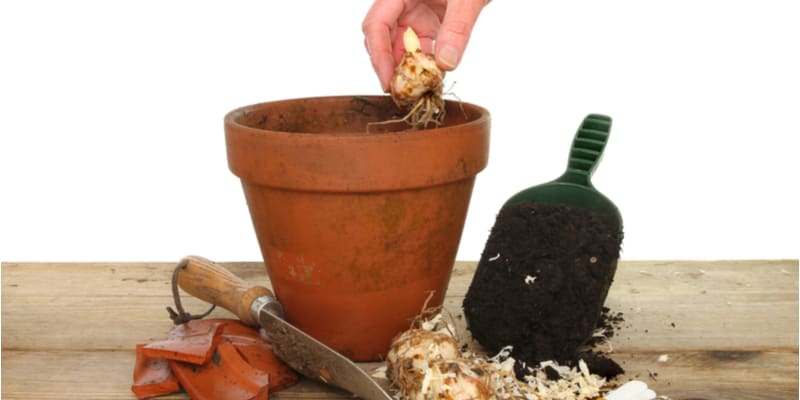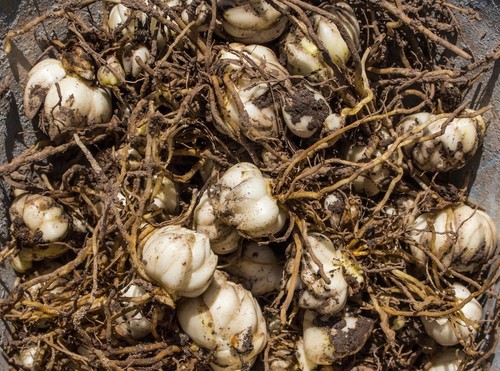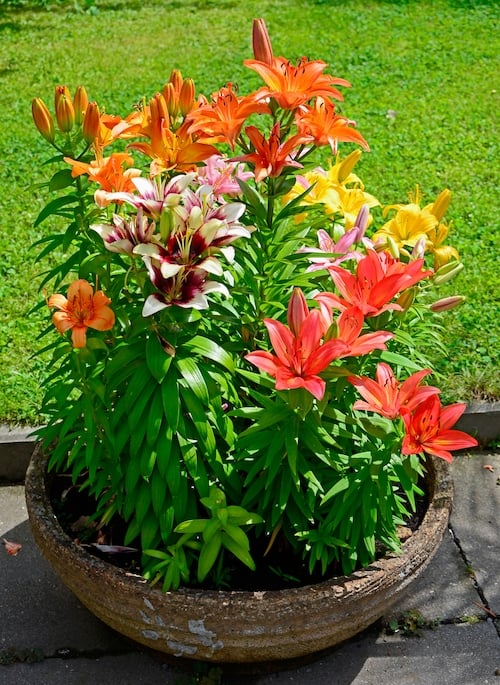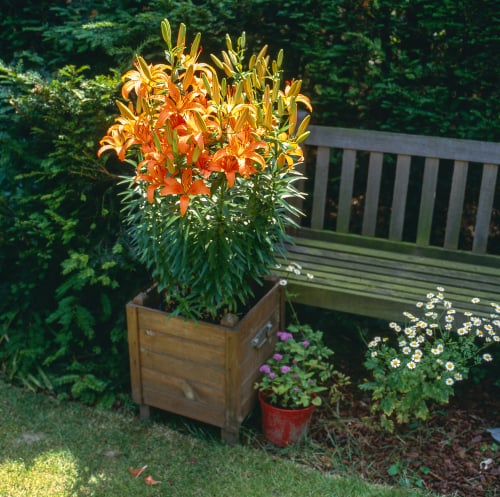
How to Grow Lilies in Pots
Our site is reader supported, this means we may earn a small commission from Amazon and other affiliates when you buy through links on our site.
Growing lilies in pots is the easiest way to control the soil environment and make them easier to move indoors for winter such as into a cold greenhouse or cold frame. Lilies are normally easy plants to grow, especially while using bulbs compared to seeds that take longer.
Growing them in pots also makes them suitable for ornamental purposes around your property depending on the style of pots you choose. Those interested in growing lilies in pots will find the information below very useful.
Growing lilies in pots
Before you get to planting, there are a few things that you should do to reduce any obstacles along the way. You should know whether you want to use seeds or bulbs to take the necessary steps. Some lily seeds require either hypogeal or epigeal germination, which can take a while to produce sizable seedlings.
Secondly, know the variety you want to plant to get a suitable container. You can find taller varieties such as Oriental lilies or dwarf varieties such as Asiatic lilies that take up little space.
Growing lilies in pots means every couple of years, you need to remove the bulbs and divide them to create space and less competition for nutrients. Ensure the pot you select has enough drainage holes to prevent waterlogged soils that encourage fungal infections.
Before I get into how to plant lily bulbs just a few pointers to bear in mind. Firstly, lilies should be planted in autumn but they can also be planted up to early spring.
When it comes to compost, most lilies can be planted in general potting compost. I prefer to use a John Innes potting compost as its soil bases and holds moisture and nutrients better. However, if you grow auratum lilies or speciosum lilies, they need acidic soil so you will need to ericaceous compost. Sometimes I also mix 20% horticultural grit through the soil to improve drainage.
How to plant lily bulbs
After choosing the best quality bulbs and compost with good drainage, it is time to plant the bulbs. The soil you select is essential for the well-being of the plant so choose your soil well as directed above.
- Fill the pot to 2/3 full, leaving some space for more compost later. Moisten the soil until water drains from the holes to ensure the soil has enough moisture.
- Position the bulbs in the soil, making sure to space them at least 50mm apart. If the bulbs are large, place them one or two per pot to avoid overcrowded plants or usually larger pots for a better display. Add more soil to cover the bulbs leaving some space to the rim. In general, bulbs can be planted 2 or 3 inches deep, or twice the depth of the bulb.
- Place the bulbs in a space where they get at least six hours of sunlight.
Want to grow lilies from seed, check out my guide here
General care
During summer feed the lilies with a high potassium liquid fertiliser, I usually just use tomato feed as it’s affordable and does the job. Feed every 2 weeks.
Watch out for lily beetles, they have bright red shells and will eat the leaves and flowers of lilies and cause significant damage. You can learn more about pests that attack lilies here
After flowering
Remove seed pods after flowering, in autumn you can repot bulbs in larger pots and place them in a cold greenhouse or cold frame. In more sheltered areas you can also leave plants against a wall. You can even just place them in a shed over winter.
Learn more about what to do with lilies after flowering
Do you have cats and dogs, do you know lilies are poisonous to them? learn more here


